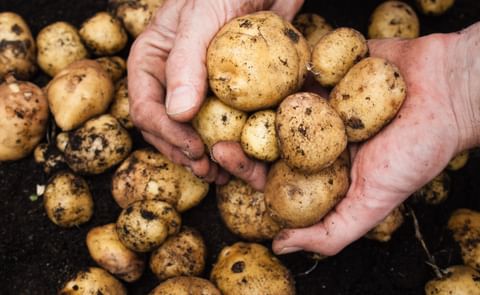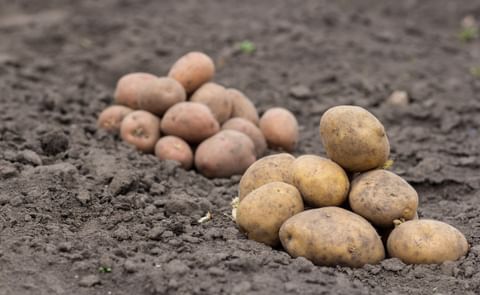Oddly shaped potato tubers are a risk from both glyphosate and dicamba exposure, according to North Dakota State University Research
Dicamba drift a new danger for potato growers

Crop damage caused by herbicide drift should be a risk on Manitoba potato producers’ radar this year.
Soybean producers are gearing up to plant Roundup Ready 2 Xtend soybeans following European Union approval last summer. The soybeans are tolerant to both glyphosate and dicamba herbicides.
But dicamba drift can cause irreparable damage in neighbouring potato crops, said Andy Robinson, a North Dakota State University extension potato specialist, during a presentation on herbicide drift at this year’s Manitoba Potato Production Days.
“Potatoes are sensitive to many herbicides,” said Robinson.
Exposure can result from soil carry-over, particle drift, contamination of spraying equipment, volatilization, misapplication and spot spraying.
Particle drift is a common culprit. Robinson pointed to research showing particles sized five microns in diameter can travel laterally up to three miles, compared with larger droplets sized 400 to 1,000 microns in diameter, which can travel around 8.5 to 4.7 feet respectively.
The new dicamba technology is a big deal for soybean producers, said Robinson, but it carries the risk of drift or off-site movement.
“We want producers to understand the ramifications on off-target movement of herbicides,” said Robinson in an interview.
Potato plants injured by dicamba spray exhibit epinasty, stem twisting and leaf cupping and stem swelling and elongation, while tubers are malformed.
Robinson has completed a study looking at the impacts of dicamba and glyphosate residues on potato. Data will be included in a forthcoming publication, but the study showed that exposure to the two herbicides reduced marketable yield and size over multiple years.
“These herbicides are not friendly to potato,” said Robinson.









